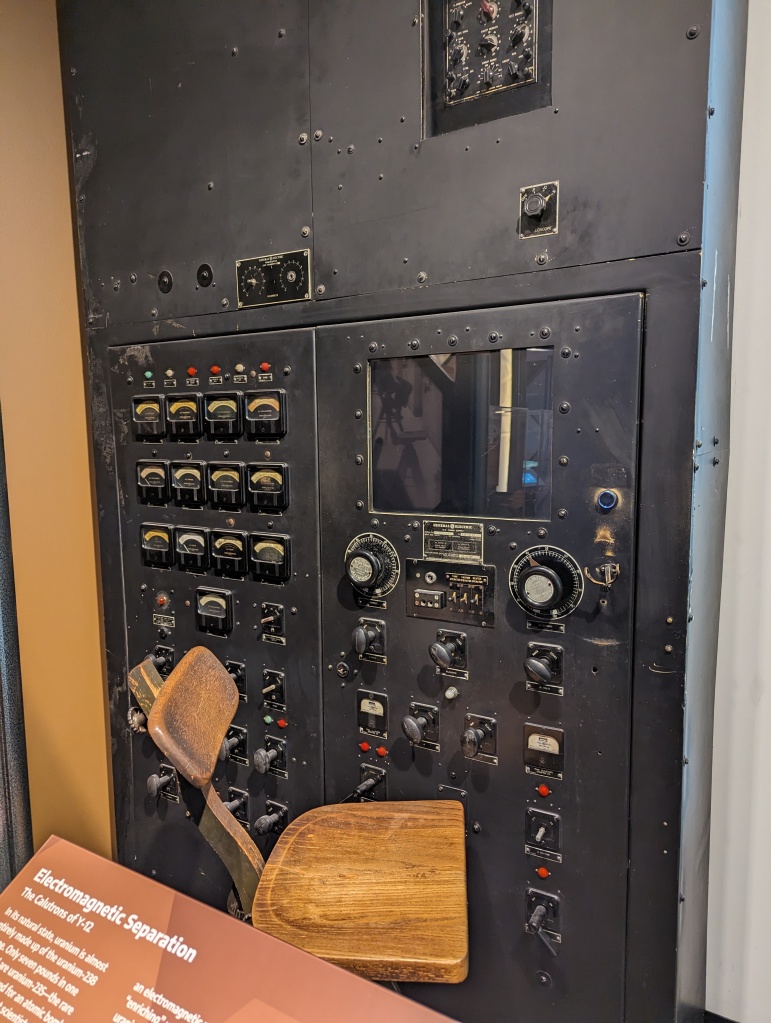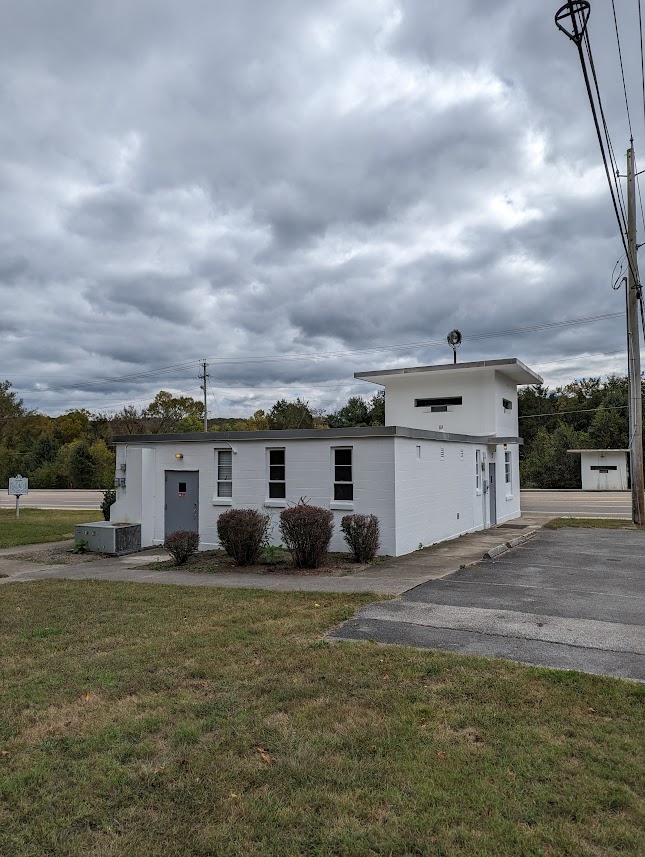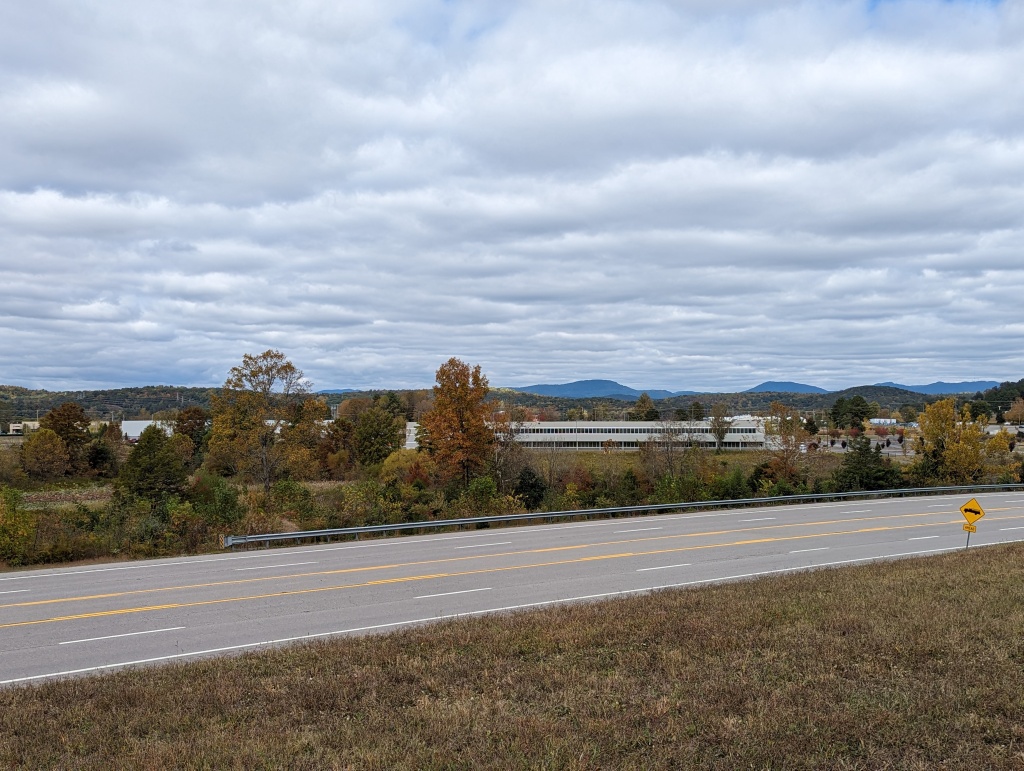On my way home from my recent trip to Knoxville, I stopped in Oak Ridge. As an East Tennessean and a historian, it’s a bit embarrassing to admit that, despite knowing the history of Oak Ridge, this was my first visit to the town itself. In honor of finally visiting the Secret City, let’s dive into the history of the Secret City.
If you haven’t heard of Oak Ridge before, it’s a town west of Knoxville, situated on several ridges along the Clinch River. While people lived in this area before the twentieth century, Oak Ridge was not officially founded until 1942 and, even then, it did not appear on any maps. Why the secrecy (hence the nickname, Secret City)? Oak Ridge was one of three sites selected for the Manhattan Project, the American attempt to build an atomic bomb during the Second World War. The other two sites were Los Alamos, New Mexico (where the atomic bombs were designed and assembled) and Hanford, Washington (where plutonium was produced). In addition to being the administrative headquarters of the Manhattan Project, Oak Ridge was the site of uranium production and enrichment.
Why locate a Manhattan Project site in East Tennessee? There were several reasons why Manhattan Project officials chose Oak Ridge as one of their main sites. First, the area around the site was not heavily populated at the time, meaning that it would be easier to keep the town’s existence – and the activities at its nuclear facilities – a secret. Second, the topography was useful. Oak Ridge is located on a series of ridges, with valleys in between. The Manhattan Project facilities could be located in the valleys, with the ridges providing natural protection against the spread of any potential disasters at the plants. Finally, water and electricity were readily available, thanks to the proximity of the Clinch River and recently-built hydroelectric plants operated by the Tennessee Valley Authority (TVA), a New Deal project.
In late 1942, the U.S. Army Corps of Engineers began acquiring land in the Oak Ridge area for the Manhattan Project. In the process, all existing residents of the area were evicted and forced to sell their land to the government. The creation of Oak Ridge displaced around 3,000 people and destroyed the communities of Wheat and Happy Valley. Many residents were forced to sell their land quickly and relocate in a matter of weeks. In place of the existing communities, workers overseen by Manhattan Project officials built four plants, as well as a town to house the project’s workers. Oak Ridge had come into existence, although it was not known as such at the time. Throughout the war, the town was simply known as the Clinton Engineer Works. Due to the secrecy of the Manhattan Project, the town did not appear on any maps, and only Manhattan Projects officials, plants workers, and their families knew of its existence (and they were constantly warned to say nothing).
The four nuclear facilities constructed at Oak Ridge were each given a code name: Y-12, K-25, X-10, and S-50. Of the four, S-50 was the least successful; it was an attempt to enrich uranium through liquid thermal diffusion, which was not able to sufficiently enrich uranium for use in an atomic bomb. The Y-12 plant used calutrons, most of which were operated by women (known as “calutron girls”) to enrich uranium through electromagnetic separation. The calutron operators were not told what the machines did; they were only trained in how to keep the calutron’s readings within certain parameters. The K-25 plant enriched uranium through gaseous diffusion, a process that turned out to be quite efficient. K-25 began operating in February 1945; at the time it began operations, K-25 was the largest building in the world, nearly 44 acres under one roof. The final plant at Oak Ridge, X-10, was a graphite reactor that served as a pilot plant for plutonium production. The world’s first continuously operated nuclear reactor, X-10 provided key knowledge for workers at the plutonium production facility in Hanford.


During the war, life in Oak Ridge was dominated by secrecy and security. Oak Ridge was the Secret City: it did not appear on any map until after World War II, and only Manhattan project officials and plant workers knew about its existence. Entrance to the area was highly regulated. Roads into town were secured with gates, and armed guards closely monitored all those who came and went. All residents of Oak Ridge over the age of 12 were required to wear identification badges with photographs and their names and physical descriptions. Signs everywhere reminded residents to remain silent about what they did at work. For most workers, this reminder was unnecessary, as they were not told what they were working on, only that it was key to the war effort. Only the top scientists and military officials at Oak Ridge knew what the plants were producing and how that material would be used.

Despite the overwhelming secrecy, Oak Ridge was a town like many others. To support the rapidly growing population (over 70,000 people by the end of the war), Oak Ridge had schools, grocery stores, movie theaters, churches, clubs, and sports teams. A bus system transported workers within the secure area, to nearby towns, and to the plants. Because of the speed of Oak Ridge’s establishment and growth, wartime housing was pretty basic. Single workers lived in dormitory-style buildings, and families lived in small, prefabricated, “flat top” houses, so named because they had a flat roof.
Black workers at Oak Ridge lived in structures called “hutments,” which were one small step up from actual huts. The “hutments” were heated by stoves, with a bed along each of the four walls. Unlike in the quarters for white workers, Black workers’ quarters were separated by gender, and married couples were not allowed to live together. Black children were not allowed to live in Oak Ridge until after the war. As this discrepancy in housing suggests, Oak Ridge was strictly segregated during (and after) the war. Although in theory there was supposed to be no discrimination in the federal defense industry, practice in the South conformed to the Jim Crow regime of racial segregation. In addition to segregated housing, Black workers at Oak Ridge used separate restrooms and ate in separate cafeterias. After the war, when Black children were allowed to live in Oak Ridge, schools were segregated as well, until the process of integration began in the mid-1950s.

When the US dropped the first atomic bomb on Hiroshima on August 6, 1945, most of the residents of Oak Ridge learned for the first time what they had been working on. Although the Secret City’s existence was now known, Oak Ridge remained a closed city, even after the end of the war. From 1945 to 1949, Oak Ridge underwent a process of transition, as production was scaled down and construction on the plants finished, leading to a large drop in population. The town also began transitioning from military to civilian control, as the civilian Atomic Energy Commission would now control the nuclear program. In the early postwar years, many of the town’s wartime buildings – especially housing – were torn down and replaced with more permanent structures.
On March 19, 1949, the gates of Oak Ridge opened to the outside world for the first time. However, although the Secret City was secret no longer, work at Y-12, K-25, and X-10 (now the Oak Ridge National Laboratory) remained restricted. During the height of early Cold War tensions, from 1949 to 1953, three “checking stations” controlled access to Y-12, K-25, and X-10. In 1953, gates to each of the three sites were relocated closer to the sites themselves (the checking stations were farther away), but the checking stations still stand as a visible reminder of Oak Ridge’s past.

Oak Ridge remains an important site for nuclear production and processing, as well as other types of scientific research. The X-10 site became Oak Ridge National Laboratory, and Y-12 still operates as a nuclear facility. Production at K-25 ended in the late 1980s; the site has since been decommissioned, and, in 2017, demolition of all the gaseous diffusion plants was completed. The site is now a technology park, and a museum, the K-25 History Center, opened at the site in 2020 (the only museum I didn’t make it to while in Oak Ridge). In addition to the K-25 History Center, you can learn about Oak Ridge’s history at the American Museum of Science and Energy and the Secret City Commemorative Walk.


While driving around Oak Ridge, I was struck by the fact that the town reflects its origins. That is, the town was constructed for one purpose: to support the Manhattan Project facilities. Because everything was focused on the plants, Oak Ridge doesn’t have a downtown or a true central area today. Moreover, although Oak Ridge has a fascinating and important history, much of its history is not visible in the town’s landscape today, since the wartime buildings were torn down or replaced over time. The original buildings that remain aren’t accessible to the general public, since Y-12 is closed to the public, except for highly regulated guided tours operated by the American Museum of Science and Energy (which I didn’t go on because I didn’t get to Oak Ridge early enough in the day). In some ways, Oak Ridge still is the Secret City: the town has a story to tell, but you have to look beneath the surface to hear it.
